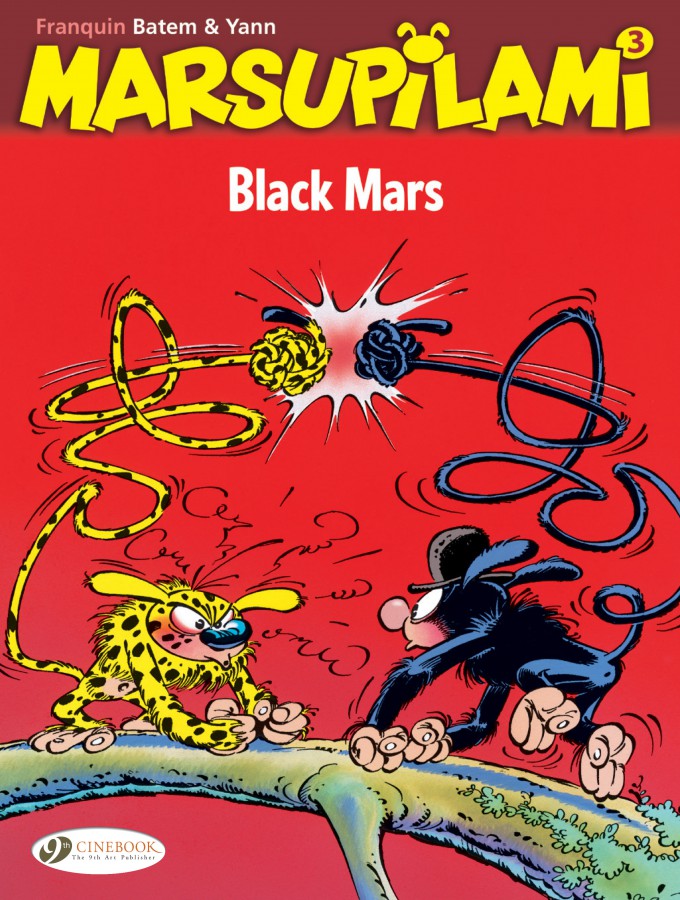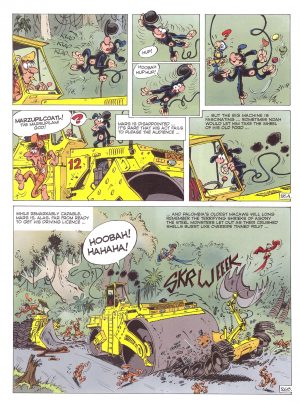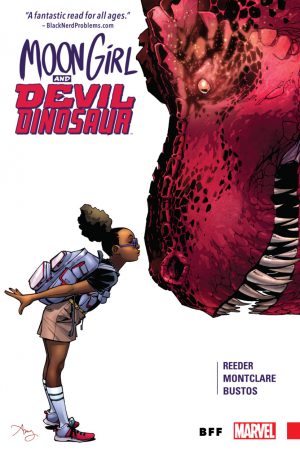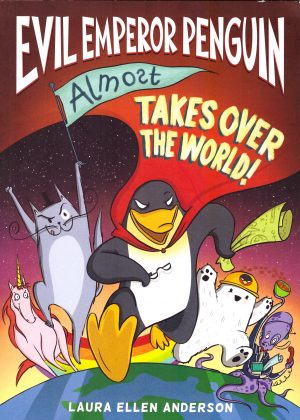Review by Frank Plowright
We may have thought the Marsupilami introduced in the Spirou and Fantasio books was the only specimen ever removed from its natural Palombian jungle habitat to experience the wider world, but Black Mars shows how that’s not the case. The title character hasn’t had the happiest of lives, kept captive in a cage and displayed in a circus, with only Noah the clown showing any kindness.
The cover illustration is deceptive as the pictured incident never actually occurs, and the equivalent is only a very small part of Yann’s story. While the regular Marsupilami family are seen, their role is limited as it’s Mars who predominates, arriving back in Palombia having long forgotten the environment, so everything is new and dangerous to him. He adapts quickly, though, and just as well since his arrival coincides with the devastation of the jungle to enable the construction of the Trans-Palombian highway. The clever aspect of the script is that Mars may lack the knowhow of the resident Palombian Marsupilamis, but he has been taught assorted skills during his time in the circus, and they can be applied to his new situation.
As before, André Franquin’s name leads the cover credits, but with Yann writing and Batem drawing Franquin’s internal credit is for ‘direction’. With Greg quitting for other work after Bamboo Baby Blues, Franquin wanted a new collaborator and a chance meeting with Yann at the supermarket was ideal. Franquin had some plot ideas and developed them into gags with Yann, who then wrote the script for Batem. Batem manages a superb approximation of Franquin’s art, producing an effervescent jungle, wonderfully lively marsupilamis and a great selection of eccentric humans.
For all Batem’s skill, Black Mars betrays its piecemeal origins. It reads as if it’s several stories strung together, and introduces randomly eccentric characters who ultimately have little purpose. At one stage Noah the clown needs to be rescued, and has to be kept separate from Mars, but the introduction of new characters to do this is clumsy. They may have a part to play in future stories, but their later scenes here are forced. The human threats are also spread too thin, with one leading to another, when a far stronger story would have resulted on a single threat better established. Still, Batem’s amazing cartooning goes an awful long way to making Black Mars look far better than it actually is, and the repeated match gags are good, even it the final one is undersold.
The series continues with The Pollen of Monte Urticando.





